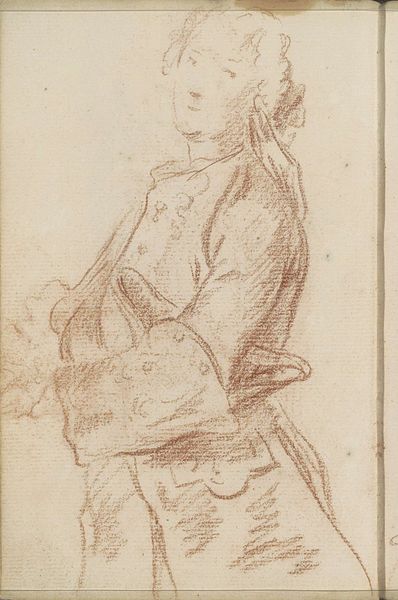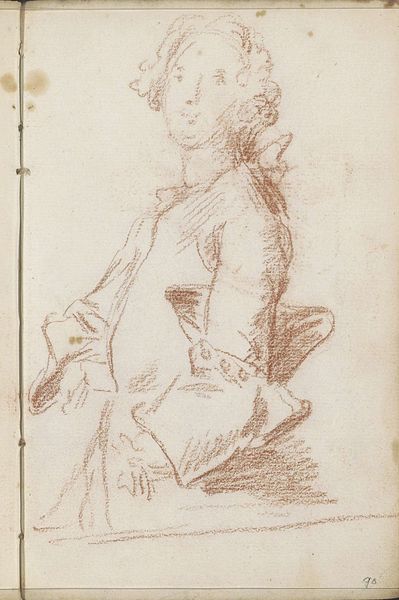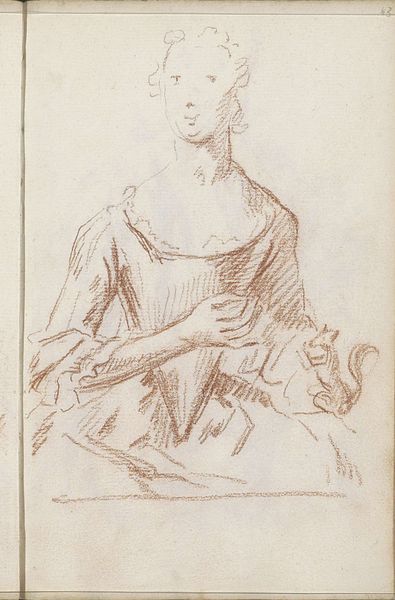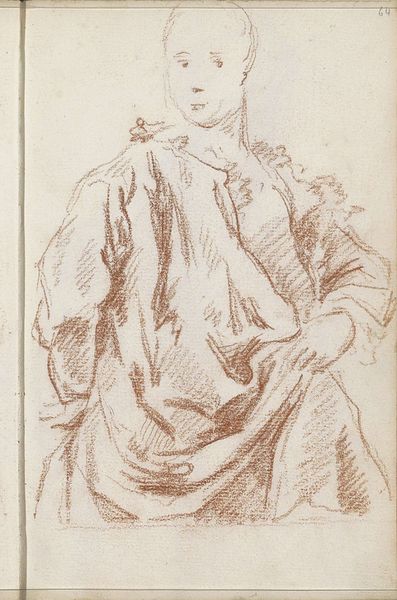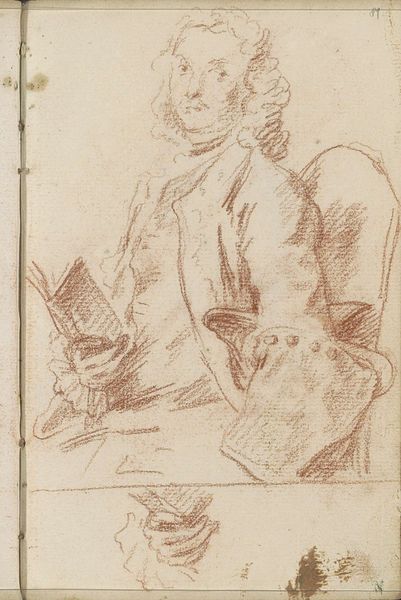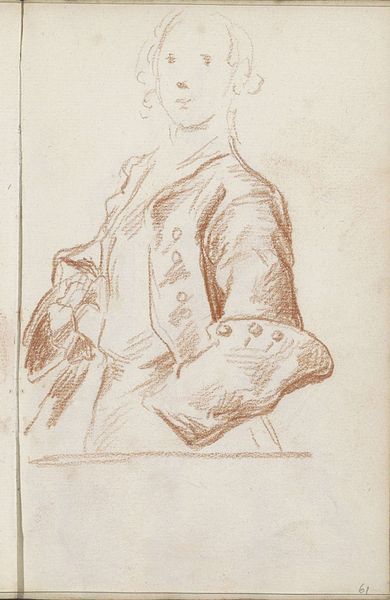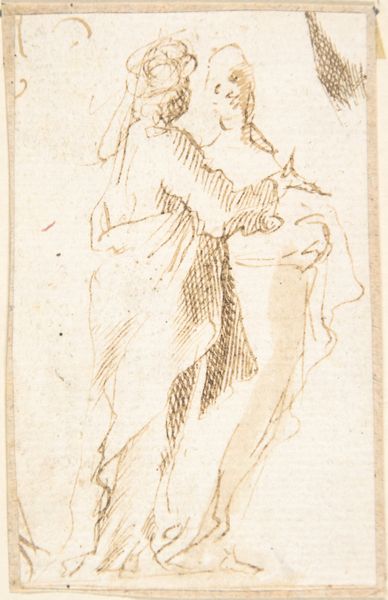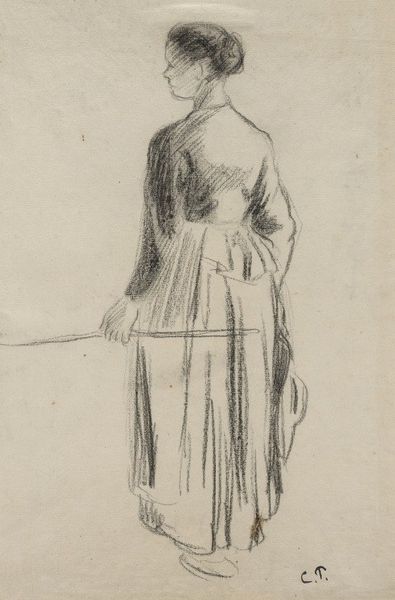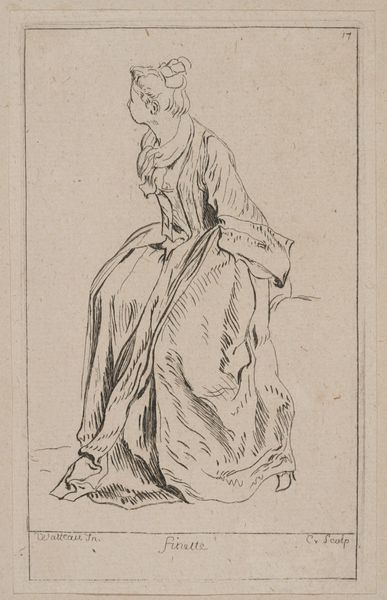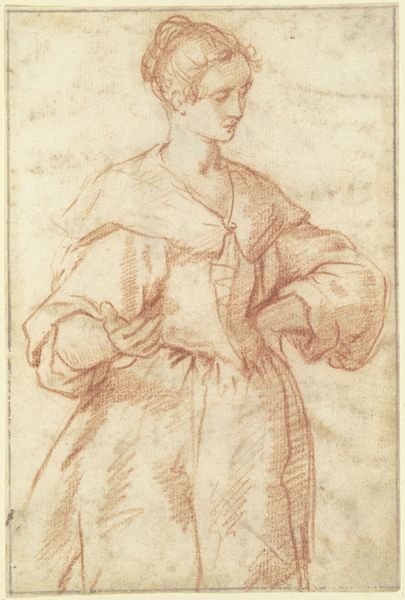
drawing, dry-media
#
portrait
#
drawing
#
baroque
#
pencil sketch
#
figuration
#
dry-media
Copyright: Rijks Museum: Open Domain
Curator: Looking at "Maan (Luna)," a drawing by Petrus Johannes van Reysschoot created sometime between 1710 and 1772, what leaps out at you? Editor: Hmm, ethereal. Almost ghostly. The quick strokes give it a fleeting quality, like a memory or a dream fading as you reach for it. There's an interesting sense of arrested movement about it too, and a slight touch of wistfulness about her. Curator: That's a wonderful way to put it. Reysschoot really captures a sense of immediacy here using, it seems, a kind of reddish chalk on paper. I wonder if "Luna" implies a celestial goddess or some personification of the moon? Editor: My initial thoughts lean into her as a representation of someone with status given how powdered wigs, courtly garments and sartorial protocols in the 18th century signified the rigid hierarchy of power during the ancien régime, but, simultaneously, the fleeting quality conjures deeper questions for me. Curator: Questions like...? Editor: I'm trying to look at the drawing through a postcolonial lens to uncover possible imperial entanglements in art and in the depiction of status. Also, how women navigate systems of social hierarchies and gendered oppression through their dress, bearing, mannerisms and overall deportment during this era. The ways gender is deployed interests me in my critical work. Curator: I see. Well, something I find quite lovely is the lightness of touch—the bare minimum of lines required to convey so much. I almost get a sense of a musician about to lead an orchestra or something, she looks about to guide us... Editor: That's interesting, you feel like she wants to lead us while, for me, there is more sense of a social script she's compelled to perform. The sketch is interesting insofar as her posture seems like that of a regal person with an almost theatrical flare about them but I wonder what stories this figure holds given what she, a noble women of the time, potentially knows, witnesses and sees from that particular location of privilege? The role of representation becomes especially potent when understanding depictions of power dynamics throughout Western Art History and its patriarchal lens. Curator: It’s so interesting to consider how an artwork like this, seemingly so simple on the surface, can lead us to such different places in our minds. Editor: Exactly. Even incomplete, and ambiguous it pushes to think outside of convention to imagine other worlds and reimagine other modalities of knowing beyond surface or sartorial readings of status.
Comments
No comments
Be the first to comment and join the conversation on the ultimate creative platform.

